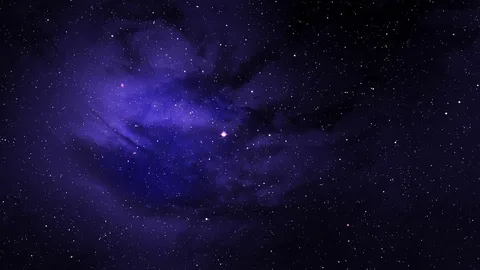Tourists went into outer space for the first time in history. How this industry is developing

On September 12, the first ever tourist spacewalk took place. As part of the private mission Polaris Dawn, billionaire Jared Isaacman and Space X engineer Sarah Gillis left the Crew Dragon spacecraft for a few minutes and returned. What does this mean for space exploration and who can repeat the path of space tourists.
What happened
The Polaris Dawn mission launched on September 10. In addition to Isaacman and Gillis, the crew included military pilot Scott Potit and another Space X engineer Anna Menon. The expedition was funded and led by Isaacman, the head of Shift4 Payments. Earlier in 2021, he was already the commander of the SpaceX Inspiration4 charity mission, which was the first made up entirely of non-professional astronauts. The three-day flight was conducted to raise $200 million for a children's hospital.
The historical spacewalk did not take place in the way that is usually customary for astronauts. The Crew Dragon spacecraft does not have its own airlock, so the entire cockpit had to be depressurized, in which other mission participants remained - they also put on spacesuits for this time. Isaacman and Gillis detached from the cradles and went outside the ship, receiving power and oxygen through cables.
Before going into outer space, the Crew Dragon crew broke the record for the flight altitude for near-Earth manned spacecraft. It entered orbit at an altitude of 1400 km - the International Space Station (ISS) is located at an altitude of just over 400 km.
How space tourism appeared
The first space tourist is considered to be the American businessman Dennis Tito. In 2001, he spent eight days on the ISS, paying $20 million for the opportunity. The flight was organized by Space Adventures in cooperation with Roscosmos. Until 2009, seven more missions were organized, during which six people visited the ISS - the American Charles Simonyi flew twice.
A new era of commercial flights began in 2021, when billionaire Jeff Bezos' Blue Origin, and then Richard Branson's Virgin Galactic, began offering their tourism services. They conducted several suborbital flights at an altitude of up to 100 km from Earth, in which up to six people participated at the same time.
Elon Musk's Space X went further and arranged for both of Isaacman's flights to low Earth orbit. Also, Axiom Space was twice engaged in the delivery of tourists to the ISS - its prices reached $ 55 million.
How to become a tourist in space
Space tourism remains an expensive and exclusive pleasure, despite the fact that expeditions are becoming more and more regular. A 90-minute flight at Virgin Galactic costs $450,000, of which one-third must be paid immediately, and the rest just before the launch of the spacecraft.
Blue Origin does not disclose the cost of its tickets, but it is known that the first tickets were raffled off at an auction for $28 million, while sometimes the company takes on board honorary passengers for free, such as actor William Shatner and astronaut Alan Shepard's daughter Laura.
For space flights, it is also necessary to be in good health and undergo certain training, but each company has its own admission criteria. For example, Virgin Galactic does not limit its customers by age and weight, obliging them only to undergo a three-day briefing, which studies the equipment, communications and structure of the ship.
What are the prospects for space tourism
In 2019, UBS estimated that by 2030 the space tourism market would reach $3 billion, the cost of a suborbital flight would drop to $100,000, and there would also be the possibility of a tourist trip to the moon.
"Space tourism has a noticeable prospect. Many people dream of going into space all their lives. The fact that [SpaceX founder] Elon Musk has joined the organization of such flights gives hope for the realization of this dream. Thanks to lotteries and competitions, this idea becomes available," he told Izvestia.
According to him, the cost of tourist flights into space has dropped to several hundred thousand dollars - this is more profitable than maintaining expensive yachts and traveling on them. They have also become more affordable in terms of admission for medical reasons.
"An example here is the actress Yulia Peresild. She underwent a certain training, available to simply healthy people. There is nothing noticeable in terms of costs and efforts. Until now, cosmonauts have been heroes, special people, and Peresild's flight showed that ordinary people also have a chance to get into space," Eismont said.
Cosmonaut Andrei Borisenko, in turn, said that in order for space flights to become as commonplace as air travel, several more decades must pass.
"This is now an expensive pleasure, the prices are literally astronomical, although there are no official prices. Space tourism will develop, the lower the ticket price, the greater the number of people willing. So far, the price is holding back the ability to fly into space. It is difficult to assess when flights will be commonplace, but sooner or later it will happen," he shared.
- Arts
- Business
- Computers
- Jogos
- Health
- Início
- Kids and Teens
- Money
- News
- Recreation
- Reference
- Regional
- Science
- Shopping
- Society
- Sports
- Бизнес
- Деньги
- Дом
- Досуг
- Здоровье
- Игры
- Искусство
- Источники информации
- Компьютеры
- Наука
- Новости и СМИ
- Общество
- Покупки
- Спорт
- Страны и регионы
- World


